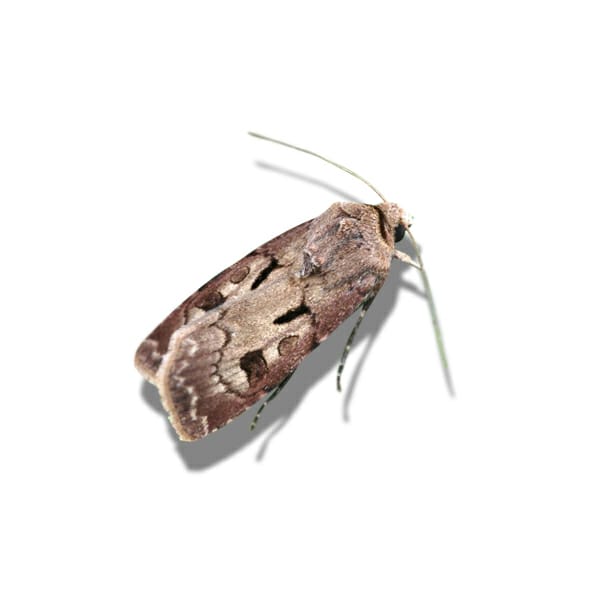Biology
The Heart and Dart (Agrotis exclamationis) moth belongs to the family Noctuidae. It is the most common moth in Europe, spreading to Asia and Japan. The moth is easy to recognize, with forewings ranging from pale to dark brown with the distinctively shaped dark spots. The Heart and Dart moth flies at night from May to July and is attracted to light, sometimes in large numbers.
The larva is brown above and grey below and feeds on a variety of plants, both wild and cultivated. The species overwinters as a full-grown larva in a chamber in the soil before pupating in the spring.
Nature of Damage
Known as a cutworm, the Heart and Dart moth larvae often sever or fatally damage plants at the base. They are common agriculture and garden pests. They are voracious leaf, bud, and stem feeders and can destroy entire plants. More over, they hosts for numerous parasitoid wasps and flies.
Monitoring
Installation of yellow or blue sticky traps such as Actiroll or Optiroll Super plus sticky roller traps, infused with pheromone, or the Impact Yellow boards from Russell IPM can provide a simple and effective monitoring system targeting Heart and Dart moths in the open field.


